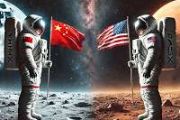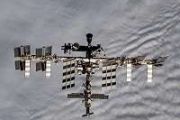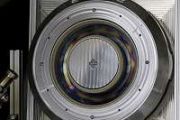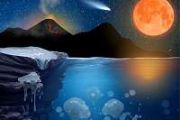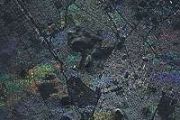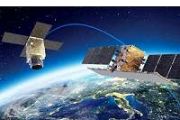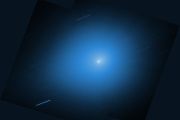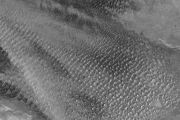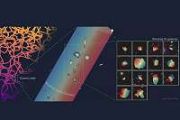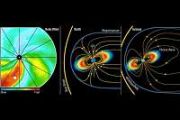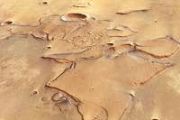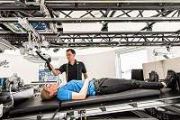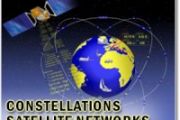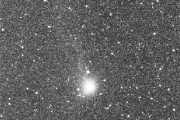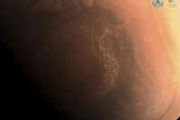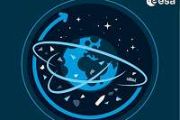
Copernical Team
Space Development Agency awards 126 satellites to Build Tranche 1 Transport Layer
 The Space Development Agency (SDA) has announced the awards of three prototype agreements worth approximately $1.8 billion to establish the foundation for Tranche 1 Transport Layer (T1TL), a mesh network of 126 optically-interconnected space vehicles (SV) that will provide a resilient, low-latency, high-volume data transport communication system, and be ready for launch starting in September 202
The Space Development Agency (SDA) has announced the awards of three prototype agreements worth approximately $1.8 billion to establish the foundation for Tranche 1 Transport Layer (T1TL), a mesh network of 126 optically-interconnected space vehicles (SV) that will provide a resilient, low-latency, high-volume data transport communication system, and be ready for launch starting in September 202 SpaceX Falcon 9 rocket to launch Inmarsat's newest satellite
 A SpaceX Falcon 9 rocket will launch the second in the Inmarsat-6 series of satellites, I-6 F2, from Cape Canaveral, Florida in Q1 2023. Japan's Mitsubishi Heavy Industries launched the first of the series, I-6 F1, in December 2021 and its fully electric propulsion system is now raising it to a geostationary orbital slot, 36,000km (22,000 miles) over the Indian Ocean. I-6 F1 will enter service i
A SpaceX Falcon 9 rocket will launch the second in the Inmarsat-6 series of satellites, I-6 F2, from Cape Canaveral, Florida in Q1 2023. Japan's Mitsubishi Heavy Industries launched the first of the series, I-6 F1, in December 2021 and its fully electric propulsion system is now raising it to a geostationary orbital slot, 36,000km (22,000 miles) over the Indian Ocean. I-6 F1 will enter service i Xplore secures $16.2M in venture funding and customer contracts
 Xplore Inc. announced it has received $16.2 million in funding to date. The company has aligned itself with exceptional strategic and veteran space sector investors, including: Alumni Ventures, Brightstone Venture Capital, KittyHawk Ventures, Private Shares Fund, Starbridge Venture Capital, Helios Capital, Lombard Street and Gaingels. Notable investors also include Tremendous View, Kingfisher Ca
Xplore Inc. announced it has received $16.2 million in funding to date. The company has aligned itself with exceptional strategic and veteran space sector investors, including: Alumni Ventures, Brightstone Venture Capital, KittyHawk Ventures, Private Shares Fund, Starbridge Venture Capital, Helios Capital, Lombard Street and Gaingels. Notable investors also include Tremendous View, Kingfisher Ca Australian startups join forces to test AI computing in space
 Two emerging Australian space startups - AICRAFT and Antaris Space Space - have signed of a memorandum of understanding (MOU) to test new Artificial Intelligence and Machine Learning (AI/ML) models in space, with the goal of developing and space-qualifying new computational capabilities for satellite-based applications.
Under the MoU the two startups, who are both members of the SmartSAT C
Two emerging Australian space startups - AICRAFT and Antaris Space Space - have signed of a memorandum of understanding (MOU) to test new Artificial Intelligence and Machine Learning (AI/ML) models in space, with the goal of developing and space-qualifying new computational capabilities for satellite-based applications.
Under the MoU the two startups, who are both members of the SmartSAT C HKATG is getting ready for its Golden Bauhinia Constellation
 HKATG has successfully launched five satellites for its "Golden Bauhinia Constellation" in 2021, the aerospace development plan shows no sign of slowing down in 2022.
In January 2022, HKST announced that the Group has planned to launch two satellites named "Golden Bauhinia Satellite No. 3" and "Golden Bauhinia Satellite No. 4" in 2022 Q3, with the target launch time tentatively being sched
HKATG has successfully launched five satellites for its "Golden Bauhinia Constellation" in 2021, the aerospace development plan shows no sign of slowing down in 2022.
In January 2022, HKST announced that the Group has planned to launch two satellites named "Golden Bauhinia Satellite No. 3" and "Golden Bauhinia Satellite No. 4" in 2022 Q3, with the target launch time tentatively being sched Space exploration made lighter, more flexible with new product from Nicomatic
 Nicomatic, the Pennsylvania-based provider of creative interconnect solutions, announces the release of a new product line for use in spacecraft: Flat Flexible Cables for Space. The flat flexible cable technology allows for lighter, more flexible space exploration of both satellites and spacecraft in low earth orbit, geosynchronous orbit, and beyond. Nicomatic's new product line has contributed
Nicomatic, the Pennsylvania-based provider of creative interconnect solutions, announces the release of a new product line for use in spacecraft: Flat Flexible Cables for Space. The flat flexible cable technology allows for lighter, more flexible space exploration of both satellites and spacecraft in low earth orbit, geosynchronous orbit, and beyond. Nicomatic's new product line has contributed NASA's NuSTAR Makes Illuminating Discoveries With 'Nuisance' Light
 For almost 10 years, NASA's NuSTAR (Nuclear Spectroscopic Telescope Array) X-ray space observatory has been studying some of the highest-energy objects in the universe, such as colliding dead stars and enormous black holes feasting on hot gas. During that time, scientists have had to deal with stray light leaking in through the sides of the observatory, which can interfere with observations much
For almost 10 years, NASA's NuSTAR (Nuclear Spectroscopic Telescope Array) X-ray space observatory has been studying some of the highest-energy objects in the universe, such as colliding dead stars and enormous black holes feasting on hot gas. During that time, scientists have had to deal with stray light leaking in through the sides of the observatory, which can interfere with observations much What's happening in the depths of distant worlds?
 The physics and chemistry that take place deep inside our planet are fundamental to the existence of life as we know it. But what forces are at work in the interiors of distant worlds, and how do these conditions affect their potential for habitability?
New work led by Carnegie's Earth and Planets Laboratory uses lab-based mimicry to reveal a new crystal structure that has major implicatio
The physics and chemistry that take place deep inside our planet are fundamental to the existence of life as we know it. But what forces are at work in the interiors of distant worlds, and how do these conditions affect their potential for habitability?
New work led by Carnegie's Earth and Planets Laboratory uses lab-based mimicry to reveal a new crystal structure that has major implicatio New astrobiology research predicts life 'as we don't know it'
 The search for alien life has been restricted to using life on Earth as the reference, essentially looking for "life as we know it" beyond Earth. For astrobiologists looking for life on other planets, there are simply no tools for predicting the features of "life as we don't know it."
In new research published in the Proceedings of the National Academy of Sciences (PNAS), a team of scienti
The search for alien life has been restricted to using life on Earth as the reference, essentially looking for "life as we know it" beyond Earth. For astrobiologists looking for life on other planets, there are simply no tools for predicting the features of "life as we don't know it."
In new research published in the Proceedings of the National Academy of Sciences (PNAS), a team of scienti Sols 3401-3402: Sand, Boulders and Ridges, Oh My
 Curiosity has been picking her way through sand, sharp boulders and ridges to find a way up onto the Greenheugh pediment. We briefly explored the pediment more than 600 sols ago, before resuming our traverse over the Mount Sharp group sedimentary rocks that we have been driving over since ~sol 750.
The science team is excited to drive up onto and investigate the very different looking rock
Curiosity has been picking her way through sand, sharp boulders and ridges to find a way up onto the Greenheugh pediment. We briefly explored the pediment more than 600 sols ago, before resuming our traverse over the Mount Sharp group sedimentary rocks that we have been driving over since ~sol 750.
The science team is excited to drive up onto and investigate the very different looking rock 





